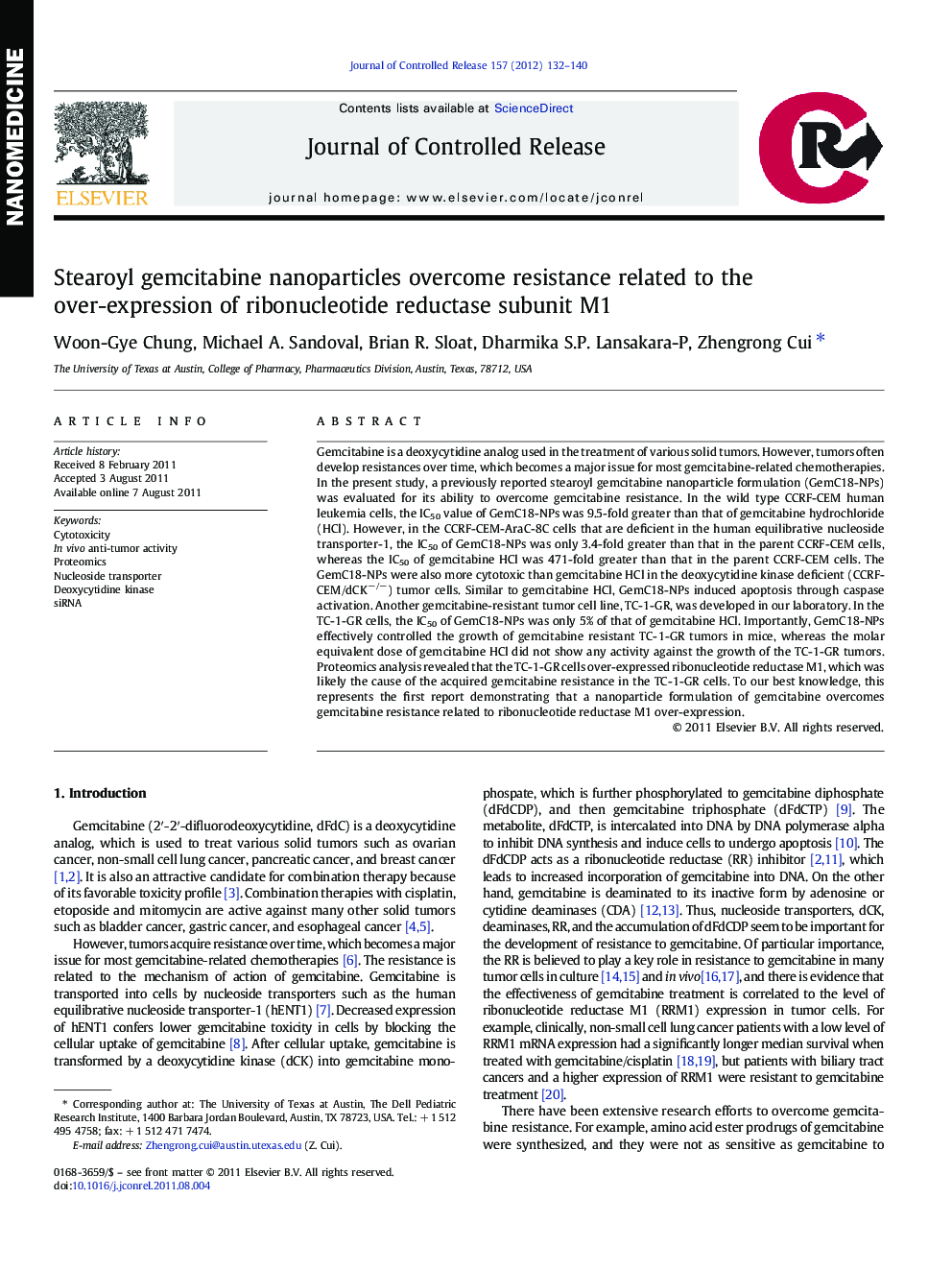| Article ID | Journal | Published Year | Pages | File Type |
|---|---|---|---|---|
| 1424862 | Journal of Controlled Release | 2012 | 9 Pages |
Gemcitabine is a deoxycytidine analog used in the treatment of various solid tumors. However, tumors often develop resistances over time, which becomes a major issue for most gemcitabine-related chemotherapies. In the present study, a previously reported stearoyl gemcitabine nanoparticle formulation (GemC18-NPs) was evaluated for its ability to overcome gemcitabine resistance. In the wild type CCRF-CEM human leukemia cells, the IC50 value of GemC18-NPs was 9.5-fold greater than that of gemcitabine hydrochloride (HCl). However, in the CCRF-CEM-AraC-8C cells that are deficient in the human equilibrative nucleoside transporter-1, the IC50 of GemC18-NPs was only 3.4-fold greater than that in the parent CCRF-CEM cells, whereas the IC50 of gemcitabine HCl was 471-fold greater than that in the parent CCRF-CEM cells. The GemC18-NPs were also more cytotoxic than gemcitabine HCl in the deoxycytidine kinase deficient (CCRF-CEM/dCK−/−) tumor cells. Similar to gemcitabine HCl, GemC18-NPs induced apoptosis through caspase activation. Another gemcitabine-resistant tumor cell line, TC-1-GR, was developed in our laboratory. In the TC-1-GR cells, the IC50 of GemC18-NPs was only 5% of that of gemcitabine HCl. Importantly, GemC18-NPs effectively controlled the growth of gemcitabine resistant TC-1-GR tumors in mice, whereas the molar equivalent dose of gemcitabine HCl did not show any activity against the growth of the TC-1-GR tumors. Proteomics analysis revealed that the TC-1-GR cells over-expressed ribonucleotide reductase M1, which was likely the cause of the acquired gemcitabine resistance in the TC-1-GR cells. To our best knowledge, this represents the first report demonstrating that a nanoparticle formulation of gemcitabine overcomes gemcitabine resistance related to ribonucleotide reductase M1 over-expression.
Graphical abstractStearoyl gemcitabine nanoparticles, not gemcitabine HCl, significantly inhibited the growth of TC-1-GR tumors that over-express the ribonucleotide reductase large subunit (RRM1).Figure optionsDownload full-size imageDownload as PowerPoint slide
